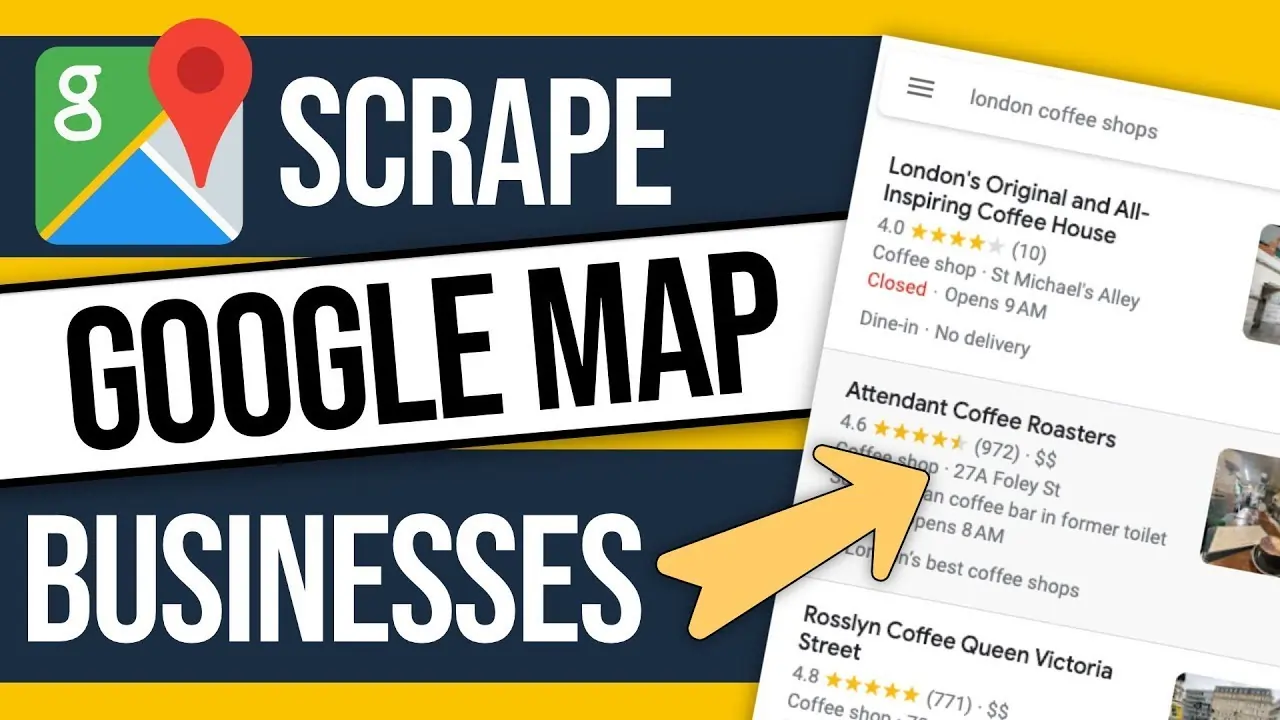
A Comprehensive Guide to Google Map Data Scraping
The Complete Guide to Google Map Data Scraper for Marketers
Estimated Reading Time: 6 minutes
- Understand the basics of Google Map data scraping.
- Learn why marketers need Google Map data.
- Gain insights on selecting and using data scraping tools.
- Discover best practices and actionable strategies.
- Explore future trends in Google Map data scraping.
Table of Contents
- Understanding Google Map Data Scraping
- Why Marketers Need Google Map Data
- Getting Started with Google Map Data Scraping
- Best Practices for Successful Data Scraping
- Overcoming Challenges in Data Scraping
- Leveraging Google Map Data for Marketing Success
- Future Trends in Google Map Data Scraping
- Conclusion
Understanding Google Map Data Scraping
Before diving into the practical applications, let’s clarify what Google Map data scraping is. Essentially, it involves extracting data from Google Maps, including business details like names, addresses, phone numbers, and even reviews. This process can provide marketers with a wealth of information that can be vital for lead generation, customer insights, and competitive analysis.
Why Marketers Need Google Map Data
Marketers are continually tasked with improving their strategies to engage their target audiences. Google Map data offers a treasure trove of localized information that can help businesses:
- Identify Potential Leads: By scraping business data, marketers can compile extensive lists of potential leads in specific geographical areas.
- Understand Customer Behavior: Analyzing reviews and ratings on Google Maps can reveal customer preferences and pain points, enabling marketers to adjust their strategies accordingly.
- Enhance Local SEO: By gathering competitor information, marketers can identify gaps and opportunities within the local market, improving their own SEO initiatives.
- Drive Targeted Advertising: With precise data, marketing campaigns can be tailored to the right demographics, improving conversion rates and optimizing advertising spend.
Getting Started with Google Map Data Scraping
Selecting the Right Tools
For marketers venturing into Google Map data scraping, choosing the right tool is paramount. The Kevi Rite Google Map Lead Scraper stands out for its efficiency and user-friendly interface. It simplifies the extraction process significantly:
- Ease of Use: With a simple setup process, even those without technical expertise can benefit from the powerful functionalities of the scraper.
- Comprehensive Data Extraction: The tool allows users to extract essential data like names, phone numbers, and addresses, crucial for lead generation.
- Bulk Scraping: Marketers can gather data in bulk, saving considerable time while increasing their outreach scope.
Practical Steps for Using a Google Map Data Scraper
- Define Your Target Area: Before using a Google Map data scraper, it’s essential to identify your target location. This could be a specific city, neighborhood, or region where your ideal customers are located.
- Set Specific Keywords: Enter relevant keywords that correspond to your industry. For example, if you operate in the home services sector, keywords like “plumbing services” or “roofing contractors” may yield beneficial results.
- Run the Scraper: Initiate the scraping process. The Kevi Rite tool will systematically pull pertinent data from Google Maps based on your input.
- Organize the Data: Once the scraping is complete, it’s vital to structure the data properly. This may involve filtering out irrelevant information or categorizing leads based on specific criteria.
- Analyze and Act: Utilize the gathered data for creating targeted marketing campaigns, following up with prospective clients, or analyzing competitors.
Best Practices for Successful Data Scraping
- Be Aware of Google’s Policies: Google has specific terms of service regarding data scraping. It is crucial to understand and adhere to these policies to avoid potential penalties.
- Quality over Quantity: While it may be tempting to gather as much data as possible, focusing on quality leads will yield better results.
- Regular Updates: The business landscape is dynamic. Regularly updating your data ensures that you’re working with the most relevant information available.
Overcoming Challenges in Data Scraping
While data scraping is an invaluable tool for marketers, it does come with challenges. Some of the most common include:
- Data Accuracy: Ensuring that the extracted data is current and accurate is critical. Inaccurate data can lead to wasted marketing efforts and missed opportunities.
- Compliance: Marketers must navigate privacy laws and regulations related to data usage. Implementing ethical data practices is essential for maintaining credibility.
- Technical Difficulties: Although tools like the Kevi Rite Google Map Lead Scraper are designed to be user-friendly, some users may encounter technical issues. Regular training and updates can help mitigate this problem.
Leveraging Google Map Data for Marketing Success
Actionable Strategies for Marketers
Here are practical takeaways for marketers looking to maximize their use of Google Map data scraping:
- Create Targeted Campaigns: Use the segmented data to create personalized marketing campaigns tailored to specific demographics or geographic locations.
- Monitor Competitors: Regularly extract data on competitors to stay informed on their activities, pricing, and service offerings. This competitive intelligence can inform your marketing strategy.
- Utilize Reviews in Marketing: Analyze customer reviews to identify common trends in feedback. Use this information to refine your products or services and to highlight positive reviews in your marketing collateral.
- A/B Testing: Once you have sufficient data, use it to conduct A/B testing on various marketing materials, determining which approaches resonate best with your audience.
- Build a Community: Engage directly with customers through feedback and social media. Utilize the data you gather to facilitate connections and foster relationships.
Future Trends in Google Map Data Scraping
As technology continues to evolve, so too will the methods and tools available for data scraping. Marketers should pay attention to the following trends:
- AI Integration: The integration of artificial intelligence in data scraping tools could enhance data accuracy and automate various processes.
- Real-Time Data Access: Future tools may provide real-time data scraping capabilities, ensuring that marketers always have the latest information at their fingertips.
- Increased Compliance Measures: As privacy laws become stricter, tools will need to adapt to ensure compliance and safeguard user information.
Conclusion
As marketers continue to navigate an increasingly competitive landscape, the importance of leveraging Google Map data scraping cannot be overstated. Tools like the Kevi Rite Google Map Lead Scraper empower businesses to access valuable local data, enhance their marketing strategies, and ultimately drive more sales.
Interested in maximizing your marketing potential with top-tier data scraping techniques? Explore the innovative features of our Google Map Lead Scraper or subscribe to our YouTube channel for insightful tips and tutorials on making the most of your data strategies at Kevi Rite Official. Take the first step toward transforming your marketing strategy today!
FAQ
- What is Google Map Data Scraping? – Google Map data scraping is the process of extracting business details from Google Maps, including names, addresses, phone numbers, and reviews.
- Why do marketers need Google Map data? – It helps in lead generation, understanding customer behavior, enhancing local SEO, and driving targeted advertising strategies.
- What tools are recommended for data scraping? – The Kevi Rite Google Map Lead Scraper is highlighted as an efficient and user-friendly option.
- What are the best practices for successful data scraping? – Be aware of Google’s policies, prioritize quality over quantity, and keep data updated regularly.
- What future trends should marketers anticipate? – Expect AI integration, real-time data access, and increased compliance measures in data scraping tools.
